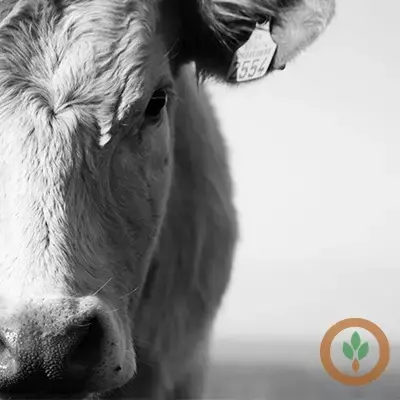The cattle futures market has seen a steady to modest rise in prices, with live cattle futures remaining unchanged and feeders gaining ground on the back of lower corn prices. As the industry gears up for the week's direct business, the market is closely watching the shifting dynamics in regional cattle supplies and demand. Meanwhile, the pork futures market has also seen a mixed performance, with lean hog futures rising on commercial spread trade and cash hog prices showing a varied picture across different markets.
Positioning for a Pivotal Week in Cattle Trade
Steady Live Cattle, Stronger Feeders
The Chicago Mercantile Exchange (CME) live cattle futures market has remained relatively steady, with the December contract unchanged at $183.70 and the February contract up $0.07 to $185.37. This stability in the live cattle segment reflects the cautious approach of market participants as they await the week's direct trade negotiations.In contrast, the feeder cattle market has seen more pronounced gains, with the January contract up $0.82 to $242.25 and the March contract rising $0.67 to $240.05. This upward movement in feeder cattle futures can be attributed to the lower corn prices, which have eased the cost burden for cattle feeders.Regional Variations in Cattle Supplies
The direct cash cattle markets have been relatively quiet as buyers and sellers assess the current week's show list. The ready numbers appear to be mixed, with higher supplies reported in Texas but lower numbers in Colorado, Kansas, and Nebraska. Industry experts suggest that widespread business is not expected until the latter half of the week.Last week's live cattle trade was light, with prices in the south settling at $187, down $3 from the previous week. In the north, the dressed trade mostly occurred at $294, also $3 lower than the prior week. The formula trade volumes were mixed, with an increase in Nebraska but declines in Kansas and Texas, and overall trade volume at least somewhat lower in all three states.Shifting Dynamics in Feeder Cattle Auctions
At the Sioux Falls Regional Cattle Auction in South Dakota, the market saw a higher undertone for steer and heifer calves compared to the previous week's limited test. However, the yearling segment experienced a more pronounced decline, with steers $5 to $10 lower and heifers $4 to $6 lower.The USDA reported that demand was very good for steer and heifer calves, with a strong presence of feeder cattle producers in attendance. In contrast, the yearling demand was described as moderate to good, with long strings of steers and heifers in full and multiple load lots, and in a heavier flesh condition.The auction data revealed that 62% of the offering were steers, and 75% of all feeder cattle weighed more than 600 pounds. Medium and Large 1 feeder steers weighing 850 to 900 pounds were reported at $241 to $249, while fleshy steers weighing 900 to 1,000 pounds brought $219 to $238. For feeder heifers, the Medium and Large 1 category saw prices ranging from $280 to $327 for those weighing 450 to 550 pounds, and $247 to $265 for those in the 650 to 750-pound range.Boxed Beef Closes Firm to Higher
The boxed beef market closed with a firm to higher tone, reflecting light to moderate movement. Choice beef was up $0.28 to $308.21, while Select beef saw a more substantial increase of $2.65 to $281.84.The estimated cattle slaughter for the week was 112,000 head, down 8,000 from the previous week and 12,473 lower than the same period last year.Hog Futures Climb on Demand Expectations
In the lean hog futures market, prices were mostly higher, driven by commercial spread trade tied to demand expectations. The December contract gained $1.35 to $81.77, while the February contract rose $1.10 to $85.92.The cash hog market, however, presented a mixed picture, with light to moderate closing negotiated numbers at the major direct markets. Business was reported to be very slow to start the week, at least partially due to the Veterans Day holiday. Last week's late trade was not particularly aggressive, which could provide a firm undertone to this week's early activity, as some buyers may be in need of near-term supplies. Nevertheless, buyer demand could be limited by the ongoing inconsistencies in the wholesale pork market.The National direct barrows and gilts were $1.85 higher, with a base price range of $75 to $86 for a weighted average of $83.52. The Iowa/Southern Minnesota and Western Corn Belt regions had no recent comparisons, with averages of $83.92 and $83.88, respectively. The Eastern Corn Belt was not reported due to confidentiality, with a five-day rolling average of $80.12. The Midwest butcher hog markets in Dorchester, Wisconsin, and Garnavillo, Iowa saw a $3 decline to $60.The pork cutout closed $0.92 lower at $101.46, with declines in butts, ribs, and hams, while bellies dropped $11.18, offsetting gains in loins and picnics. The estimated hog slaughter for the week was 458,000 head, down 31,000 from the previous week and 15,100 lower than the same period last year.
